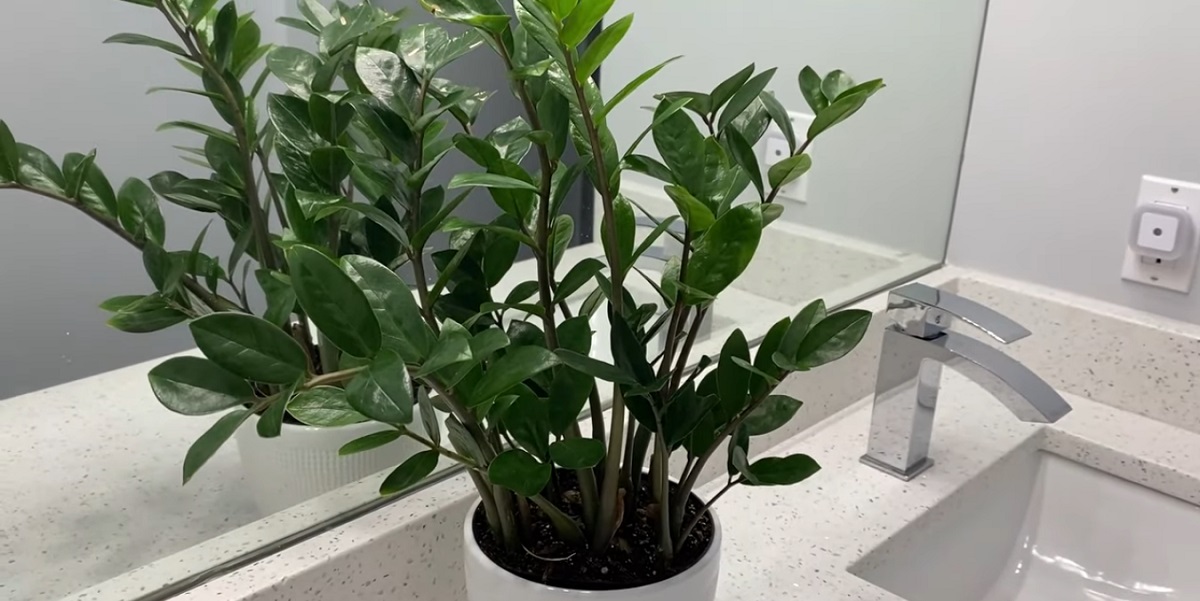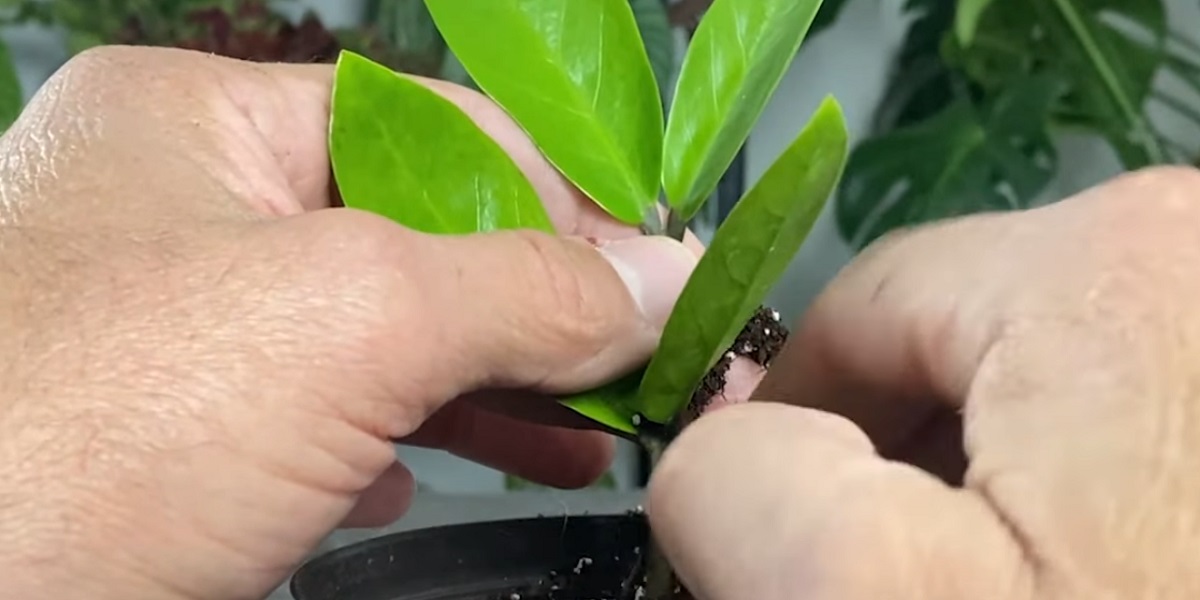Is it better to propagate ZZ in water or soil?
introduction
The Zamifolia plant known as the ZZ plant
The zamifolia plant has the scientific and botanical name Zamioculcas Zamiifolia.
The stems of this plant are grown in a beautiful, almost curved shape, thickening from the base.
This article discusses the method of propagation of the zamifolia plant by leaf cutting or cuttings.
Is it better to propagate ZZ in water or soil?
Irrigation and fertilization for the growth and reproduction of the Zami folia plant
Zamifolia grows with minimal care. In fact, they thrive better if the plant is left alone.
The only way to kill this plant is to water it too hard.
So if you can not remember how to take care of this plant, just forget about watering it.
Zamifolia indoor plants are easy to cultivate and especially suitable for forgetful gardeners.
The fact that the Zamophilia plant does not need much watering is due to the presence of the plant’s rhizomes, which look like balls or potatoes underground.
You can see them under the soil and at the bottom of the stems. If you take a cutting of Zamophilia, the rhizomes will form and form an independent plant.
When propagating Zamophilia plant grows new rhizomes and roots, and the plant grows gradually.
It is very interesting to watch the growth of your new plant up close, and it is very pleasant. Therefore, propagation in the water will be more successful.
the reason for naming Zamifolia as a ZZ plant
Zamifolia is a slow-growing, reliable plant that is very loyal even if not treated properly.
Propagation of the Zamifolia plant is very easy and convenient but may take 9 months or more.
Since Zamioculcas Zamiifolia was long and difficult to pronounce, many gardeners and botanists simply shortened the name to ZZ.
Zamifolia has been around for centuries and is originally from semi-arid Africa.
Types of propagation of Zami folia plants
The first method: propagation of zami folia plant by stem cuttings For the propagation of the Zamifolia plant or ZZ plant, you can use stem cuttings.
A cutting from the stem of the Zamifolia plant will propagate faster than a leaf cutting.
Preparation of the pot for the propagation of the zami folia plant
- Drainage is very important! Use pots with drainage holes in the bottom.
- Pour about 5 cm of potting soil into the desired pot. This layer of about 5 cm will allow the roots of the plant to grow before replanting. Knowing how to choose the best potting soil for houseplants will help the plant grow well and be healthy.
- Place the rooted cuttings in the pot and very gently and slowly press the soil. You can put several stems in one pot.
- When all the stems are in the pot, fill the pot to the brim.
The second method: is the propagation of the zami folia plant by leaf cuttings
Propagation of the Zamifolia plant by leaf cuttings takes longer than by rhizome and root cuttings, but you can propagate your plant by leaf cuttings.
Pests and diseases of Zami folia plant
-
Scale insects
The zamifolia plant rarely suffers from pests or diseases, but you should be wary of insects and pests of this plant.
Occasionally, a scale insect may tamper with the plant, but it is never a serious and dangerous infestation.
-
Falling off of the leaves of the Zami folia plant (falling off of the leaves)
Sometimes the leaves of the plant begin to fall and the stems bend. The long petioles that support the leaflets are no longer erect.
The main cause of zamifolia plant bending is lack of light. When a ZZ plant grows in the wild, it thrives best in the shade and in the forest.
-
Yellowing of the Zamifolia plant (yellowing)
Yellowing of older stems is normal. It is best to let them take their course. The process of yellowing and drying causes the plant to recover nutrients.
In this case, it is better to remove them so that the ZZ plant remains alive.
If the whole ZZ plant yellowed, it may be due to the following reasons:
– Root rot: due to excessive watering and inadequate drainage. Check if the pot has a drainage hole.
Pour out the water that collects in the plate under the plant.
– Lack of nutrients: add some fertilizer every two weeks during the growing season.
– Insufficient space for root growth: the pot is too small, so the roots become entangled in the pot and the plant suffocates.
In this case, remove the plant from the pot, open the roots, and cut the longest root.
The root should not be longer than 3 cm. Then plant the plant in a larger pot.
The right light for the growth of Zamifolia plants
Zamifolia plants do best in bright to moderate indirect light, but will also thrive in very low light.
This plant is ideal for a windowless office or bathroom where it receives very little fluorescent light.
These plants can receive direct light, but if exposed to direct light, burning can occur on the leaves.
Different types of zami folia plant
- Raven ZZ
- Zenzi ZZ
- Dwarf ZZ or Zamicro
- Lucky ZZ
Propagation of Zamifolia or ZZ, a home air purifier
Scientists studied the ZZ plant and found that this plant is good at removing pollutants from the air.
It filters and stores the toxins benzene, ethylbenzene, xylene, and toluene in its roots, stems, and leaves.
A smart tip for propagating the Zami folia plant
If the leaves are secreting water due to stress, don’t throw them away!
You can simply put all the leaves into the soil one by one along with the lower stem of the plant and grow and propagate the new ZZ plant from the beginning!
Conclusion
As mentioned above, the conditions of care for this plant are very simple and convenient.
In other words, Zamifolia is considered a trouble-free plant.
I hope that this article was useful for you and you can propagate and keep this seemingly artificial plant in your home. in the coming days.















